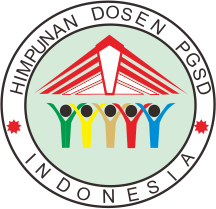The Application of Blended Learning’s Station Rotation Method in Elementary School’s Science Education to Improve Higher Order Thinking Skills
DOI:
https://doi.org/10.30595/dinamika.v11i2.5048Keywords:
Station rotation, Higher order thinking SkillsAbstract
This study applied Station rotation as one of differentiated instructions. Each student who comes in the classroom has a unique characteristic to capture the lesson in the classroom. Blended Learning’s Station Rotation is a learning method that nurtures higher order thinking skills and is able to meet all the students learning needs. This study is a classroom action research and uses One-Group Pretest-Posttest Design with descriptive quantitative analysis techniques. Data is collected through observation, interviews, teacher’s journal, and students’ learning outcomes. Station rotation is able to promote students’ performance in problem solving, critical thinking, and finishing project creatively to apply their understanding in their learning process. The result showed, the Station Rotation method promotes higher order thinking skills.References
(1) Apricot Ann Truitt, “A Case Study of Station Rotation Blended Learning Model in a Third Grade Classroom”: Dissertation student research university of Colorado Scholarship & Creative Works @ Digital UNC, 2016.
(2) Katherine Mackay, “Proof Points: Blended Learning Success in School Districts,” Case study by Evergreen Education Group and Clayton Christensen Institute, September 2015, https://www.christenseninstitute.org/publications/proof-points/ (accessed June 3, 2019)
(3) Jason Scott Haas. 2016. Change Leadership Practices For Effective Implementation Of Alternative Breakthrough Models In Blended And Online Learning At Select K-12 Schools: A Phenomenological Study, Liberty University, Lynchburg, VA. Dissertation Prospectus-Core https://core.ac.uk/download/pdf/75898006.pdf (accessed June 3, 2019)
(4) Johnson, David W and Johnson, Roger T. Learning together and Alone; Cooperative, Competitive, and individualistic Learning. Massachusetss : Allyn and Bacon a Paramount Communications Company, 1996.
(5) Christensen, C. M., Horn, M. B., & Staker, H. Is K-12 Blended Learning Disruptive? An introduction of the theory of hybrids. www.christenseninstitute.org. [Online] February 21, 2019. http://www.christenseninstitute.org/wpcontentuploads/2013/05/Is-K-12-Blended- LearningDisruptive.pdf.
(6) Bookhart, S. M. How to Assess Higher Order Thinking Skills in Your Classroom. U.S.A : Association for Supervision & Curriculum Development (ASCD), 2010.
(7) Anderson, Lorin W and Krathwohl, David R. A Taxonomy for Learning, Teaching, and Assessing; A Revision of Bloom’s Taxonomy of Educational Objectives. New York, U.S.A : Addison Wesley Longman, Inc., 2001.
(8) Saifer, Steffen. Hot Skills Developing Higher-Order Thinking in Young Learners. St.Paul, MN : Redleaf Press, 2018.
(9) Tomlinson, Carol A. The Differentiated Classroom: Responding to the Needs of All learners. 2nd Edition. Alexandria, VA, U.S.A : ASCD Publication, 2014.
(10) Aubusson, Harrison and Ritchie. Metaphor and Analogy in Science Education, Science and Technology Education Library Volume 30. Drodrecth, The Netherlands : Springer, 2006.
(11) Kemmis, S and and McTaggart, R. The Action Research Planner (3rd ed.). s.l. : Geelong: Deakin University Press., 1992.
(12) Tomlinson, Carol A. How to Differentiated Instruction in Mixed Ability Classroom. Alexandria, VA, U.S.A : ASCD Publication, 2001.
Downloads
Published
How to Cite
Issue
Section
License
Authors who publish with this journal agree to the following terms:
Authors retain copyright and grant the journal right of first publication with the work simultaneously licensed under a Creative Commons Attribution License that allows others to share the work with an acknowledgement of the work's authorship and initial publication in this journal.
Authors are able to enter into separate, additional contractual arrangements for the non-exclusive distribution of the journal's published version of the work (e.g., post it to an institutional repository or publish it in a book), with an acknowledgement of its initial publication in this journal.
Authors are permitted and encouraged to post their work online (e.g., in institutional repositories or on their website) prior to and during the submission process, as it can lead to productive exchanges, as well as earlier and greater citation of published work (See The Effect of Open Access).

Dinamika Jurnal Ilmiah Pendidikan Dasar is licensed under a Creative Commons Attribution 4.0 International License.













